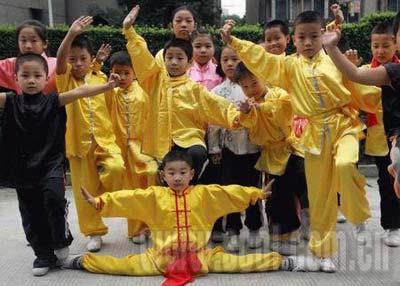Source:
01-16-2009 14:53
Chinese boxing, commonly known in the west as practical Kung Fu, is the oldest name used by Westerners to describe the systematic and effective Chinese art of self-defence. Chinese Boxing is a traditional martial art. It aims to progressively train your body as well as your mind to achieve positive health and acquire effective skills to defend yourself at all times. Chinese Boxing is the art of total self-defence.
 |
| Chinese boxing |
Chinese Boxing is rooted in an ancient tradition born out of the instinct to survive in the midst of military conflict. With its origins in the famed Shaolin Temple, Chinese Boxing has endured for thousands of years and is not only the foundation for Chinese kung fu, but most martial arts that developed in the Eastern part of the world.
These classical kung fu movements are for the purpose of improving grounding and balancing skills. Chinese Boxing may be practiced as a pattern of various movements simulating a real fight for the student to achieve an aerobic workout. It may also be practiced as a fighting method.
Chinese boxing, or to use the present-day terminology Chinese Kickboxing, has been practised for thousands of years by the Chinese in order to prepare for the vital military survival skills of the time. The famous Shaolin Temple in China had, however, played a part in the development and spread of Chinese boxing which is the forerunner of all martial arts in the East.
There are as many similarities as differences between styles. Often, when people look at someone performing a particular art they see differences; however, if one is careful, and uses a discerning eye, then the similarities become evident. Some like Taiji are further classified into different styles: Yang, Chen, Sun, and Wu for instance. Some are taught and practiced according to traditional methods and some are more modern. For practitioners of all levels, a good mix of modern and traditional training is beneficial. For best development, one should practice both internal and external. The human body is very adaptable and can easily become accustomed to one training regimin, which may lead to strength in one area, but result in a weakness in another. A wise student should take some of the traditional inner teachings with that of the external. The human body needs both fast and slow movements, hard and soft movements; working from the inside out and at other times from the outside in. Many people are attracted to the practice of Taiji and its internal methods; at the same time they eschew the external training of other systems and deprive themselves of everything that Chinese boxing (martial arts) has to offer.
All these systems incorporate elements of self defense, movement re-education, and require correct body alignment and posture. One should expect to spend years learning or relearning how to control your body. These are just the physical components of the art, however. At their deepest level individual cultivation is possible.
